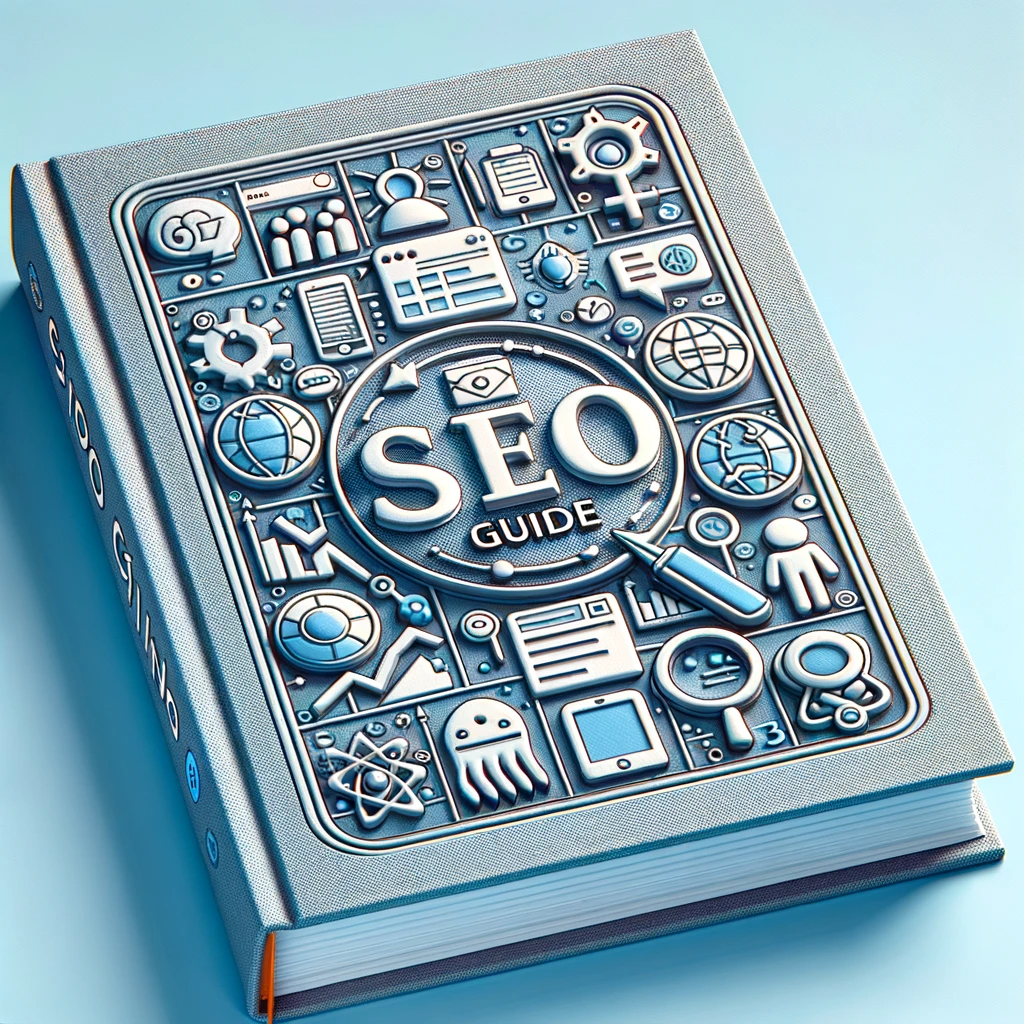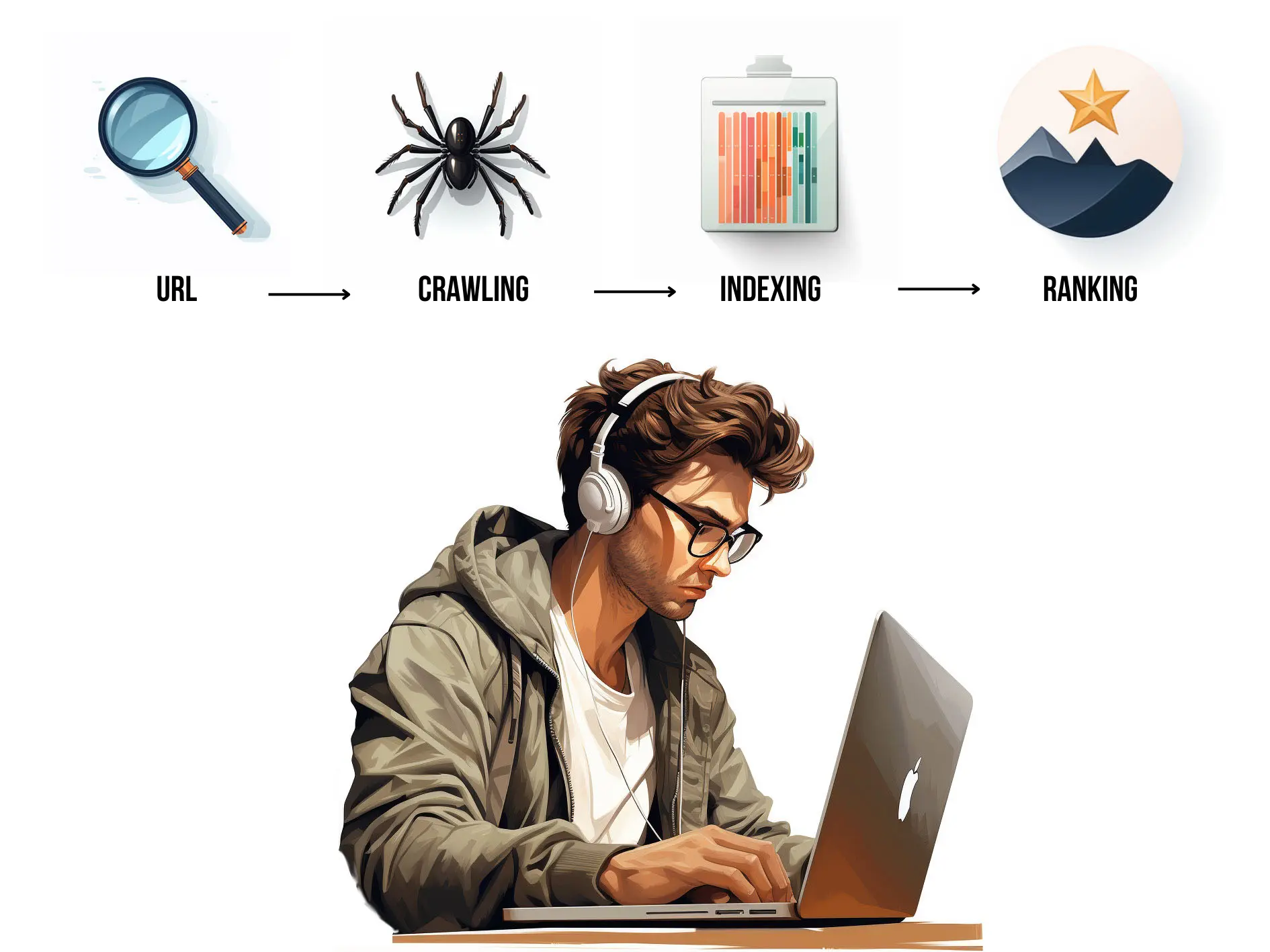On-Page SEO is the process by which different elements of an individual web page are optimised to rank higher and receive more relevant traffic from search engines such as Google. This includes optimising both the content and the HTML code. With a properly implemented On-Page SEO, your website becomes more search engine friendly, which in turn can lead to higher organic traffic and improved user experience.
How important is On-Page SEO?
On-Page SEO is one of the most basic and important components of a successful SEO strategy. By optimising page content, meta titles and descriptions, image alt texts, URL structures, internal links and other on-page elements, you can improve your website's visibility, usability and search engine rankings. This is where the magic happens - when every single element on your page works harmoniously to create an optimal user and search engine friendly experience.
Keyword optimisation
Choosing the right keywords is the basis for a successful On-Page SEO strategy. Keywords help search engines like Google understand the relevance and value of your content. They act as bridges between your website and the potential to rank high in search results.
Choosing the Right Keyword
To create a robust SEO strategy, the first step is to identify the keywords that are most relevant to the content and have a high search volume. There are several tools that can be used for this purpose, such as Google Keyword Planner or Ahrefs.
Placement of keywords
Once the right keywords have been identified, the next step is to place them strategically within your website. Keywords should be implemented in titles, subheadings and throughout the content. This helps search engines to quickly and easily understand the context and relevance of the content.
Long-tail Keywords
Long-tail keywords are longer and more specific phrases that visitors are more likely to use when they are closer to a point of purchase. They tend to be less competitive, but usually have a higher conversion rate. Including long-tail keywords in your SEO strategy can drive more qualified traffic to your website.
Content quality
Content is king is a common phrase when talking about digital marketing. The content on your website needs to be valuable, relevant and engaging to attract and retain visitors.
Creation of Valuable and Relevant Content
Creating valuable and relevant content requires understanding your audience and what they are looking for. Content should be informative, well-organised and answer the questions your audience may have.
Use of Multimedia and Visual Content
Multimedia such as images, videos and infographics can make content more engaging and help visitors better understand the content. Visual content can also help improve your website's SEO, as search engines like to reward rich, multimedia content.
Timeliness and updating of content over time
SEO is not a one-off process. Search engines value fresh and updated content, so it is important to regularly update and renew the content on your website. This includes updating old content with new information, correcting errors and keeping up to date with the latest SEO trends and guidelines.
Devoting time and effort to both keyword optimisation and content quality will set a strong foundation for your on-page SEO strategy. This in turn will increase your website's visibility in search engine results, thus increasing traffic to your website.
Meta Titles and Descriptions
Meta titles and descriptions play a critical role in your website's SEO. They give search engines, as well as users, a quick overview of what the page is about. Well-optimised meta titles and descriptions can drastically improve your click-through rate (CTR) from search results.
Optimisation for better click-through rates
An enticing meta title and description can increase the chances of users clicking on your link rather than a competitor's. It is important to include relevant keywords, while maintaining a natural and engaging tone.
Best Practice for Length and Formulation
There are some guidelines to follow regarding the length and wording of meta titles and descriptions. A meta title should be between 50-60 characters long, and a meta description should be between 150-160 characters. It is important to stay within these limits to ensure that your text appears correctly in search results.
Rubric structure
A logical and well-organised header structure not only makes your website more readable, it also helps search engines better understand the content. Proper use of header tags (H1, H2, etc.) is an important part of on-page SEO.
Correct Use of Header Tags
Each page should have only one H1 tag, which is mainly used to define the title of the page. H2 to H6 tags are used to structure the content into smaller sections and sub-sections. This hierarchical structure helps search engines to understand the layout of the content and relationships between different sections.
Logical and clear structure
A logical and clear structure improves the user experience, which in turn can lead to better SEO results. Users prefer content that is easy to follow and understand. Therefore, it is important to have a clear and consistent header structure throughout your website.
Optimising your meta titles, descriptions and header structure are small steps that can make a big difference in how well your website performs in search results. It takes time and patience to fine-tune these details, but the results are well worth the effort.
URL structure and breadcrumbs
A well-organised URL structure and the use of breadcrumbs are key aspects of on-page SEO that contribute to a better user experience and search engine optimisation.
Creation of SEO-friendly URLs
An SEO-friendly URL should be short, descriptive and include relevant keywords. It is also beneficial to avoid complex strings and special characters. A clean and logical URL structure helps both users and search engines understand the page's content.
The Importance of Breadcrumbs for Navigation and SEO
Breadcrumbs improve navigation by showing users' position on the website. They also help search engines to understand the structure of the website. By using breadcrumbs, you can improve the usability and SEO of your website.
Internal and External Linking
Linking, both internal and external, is critical to building a robust SEO strategy. Proper linking can increase your site's authority, improve user experience, and help with page indexing.
Best Practice for Internal Linking and its Impact on SEO
Internal linking helps spread link equity throughout your website, which in turn can help improve page rankings. Creating logical and useful internal links between relevant pages can also keep visitors on your site longer.
Proper Use of External Linking and How it Can Increase Authority
External linking, or linking to relevant and authoritative external websites, can help increase the authority and reliability of your website. It is important to choose quality and relevant external links that add value to your content.
By combining an SEO-friendly URL structure and breadcrumbs with a solid linking strategy, you create a strong foundation for your site's on-page SEO. This strategy will not only improve your site's search engine ranking, but also improve your users' experience when navigating your site.
Mobile optimisation
Mobile optimisation has become one of the most important factors in SEO as more and more people use mobile devices to browse the web. A mobile-friendly website is not only convenient for users, but it is also a ranking factor for Google.
The importance of a mobile-friendly website
A mobile-friendly website improves the user experience for visitors using smartphones and tablets. Sites optimised for mobile devices have shorter loading times and are easier to navigate on small screens.
Technologies to Improve Mobile Experience and Loading Times
Implementing responsive design, optimising images and reducing server response time are some of the techniques that can be used to improve the mobile experience and reduce loading times. Optimising for mobile is an important part of an overall SEO strategy.
Page speed and Technical SEO
Fast page speed and solid technical SEO are essential to ensure a smooth and search engine friendly website.
Optimisation techniques to improve page load time
Improving page load time can be achieved by optimising server performance, reducing external scripts and using caching technologies. It is also important to optimise the images you use on your website. It is not uncommon for the size of images to exceed 1 megabyte, but with a little work you can reduce their size to a tenth of that. Faster loading times lead to a better user experience and can also improve your website's ranking in search engine results.
Basic Technical SEO that Can Make a Big Difference
Basic technical SEO includes measures such as ensuring a clean and efficient code structure, using schema markup and implementing an XML sitemap. These technical optimisations help search engines to better understand and index your website, which in turn can lead to improved search engine rankings.
Working on mobile optimisation and technical SEO is like fine-tuning the engine and chassis of a car. It is necessary to ensure your website runs smoothly and efficiently, providing a better experience for both users and search engines.
Social Signals and Reviews
Social signals and reviews are indicators of your website's popularity and authority, and they play an important role in your SEO strategy.
How Social Signals and Online Reviews Affect SEO
Social signals, such as social media shares and likes, as well as online reviews, can affect how your website ranks in search engines. A strong social media presence and positive reviews can increase your website's credibility and thus improve your SEO.
Strategies to Increase Social Signals and Get Positive Reviews
Creating engaging content that encourages sharing, as well as encouraging satisfied customers to leave positive reviews, are some of the strategies that can help you improve your website's social signals and reviews.
Measurement and Analysis
Measurement and analysis are crucial to understanding and improving your on-page SEO performance.
Use of Tools for Measuring On-Page SEO Performance
There are many tools available, such as Google Analytics, Google Search Console and Ahrefs, that can help you measure and analyse your website's SEO performance. These tools provide valuable data that can help you identify areas for improvement.
How to Use Data to Make Informed Improvements
By analysing data from these tools, you can make informed decisions about where and how to focus your SEO efforts. It can help you identify which keywords are performing well, which pages need improvement, and which strategies produce the best results.
Investing time and resources in building strong social signals and reviews, as well as regularly measuring and analysing your site's performance, is crucial to long-term SEO success. These efforts will pay off in the form of higher rankings, increased traffic and, ultimately, more conversions.





